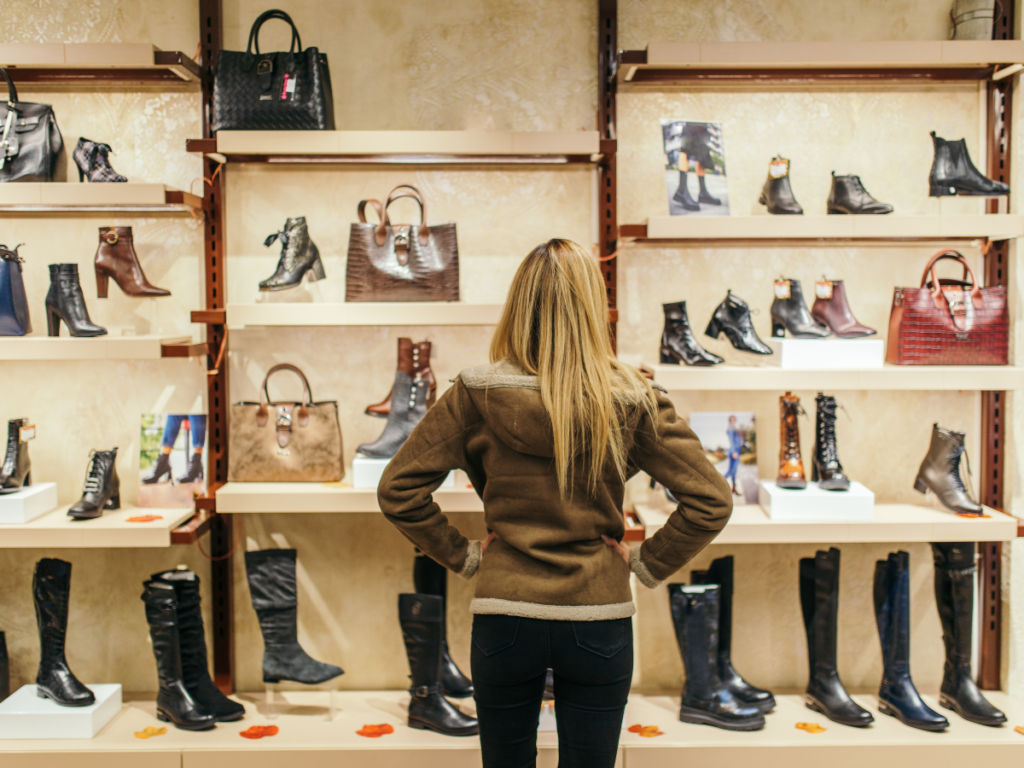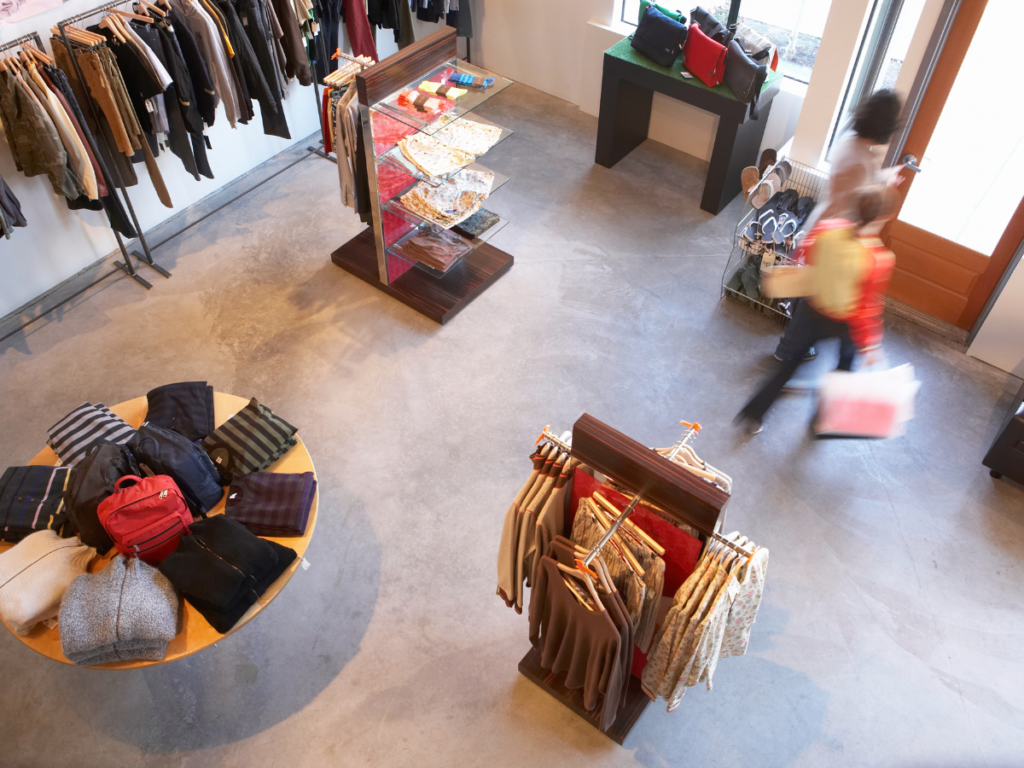How do you start-up your online retail business in a physical location?
Congratulations! You’re successfully selling your incredible product online with a strong following and great brand identity. So what’s next?
Have you dreamed of having your own physical store but been daunted by the challenges, long term commitment, and associated costs? Is there still a place for the physical store when so much retail is now online? According to ecommerce platform Shopify, brands are increasingly viewing brick-and-mortar stores as having a competitive edge.
The ‘why’ of a physical in-store experience

There is something truly special about launching your own business in the physical ‘real’ world and testing the product you love in a new place with a live audience. While we might love the convenience and efficiency of shopping online, you just can’t get that face-to-face personal connection, which really can build trust and a loyal new following. It is also a great selling opportunity, particularly if you have a beautiful product that is great to touch, smell or taste!
Today’s shopper requires a hybrid shopping experience, this means that leading retailers offer their customers a combination of online and in-store buying, creating a seamless and personalised experience.
Who are your in-store shoppers?

You have built up a good picture of who your online audience is, you have their buyer persona and understand their profile inside and out. They find you easily using Google (thanks to your astute SEO work). But do you know who your in-store shopper is? Is it just your online audience out and about in the real world?
Think again!
The shopper that stumbles across your physical store is likely to be quite different from the one who seeks you out online. They’re more likely to make an impulse purchase, and they can come from a wider range of demographics from the ones you’re targeting online. So think about how you will convert them and you could find you capture a whole new audience, one that is significantly different and broader compared to your online audience.
Key steps for starting your first in-store location
The good news is that with a little bit of research and planning it really can be easy and quick to get started in taking your business to a physical location. Which is why we have put this handy guide together to help you on your journey, taking your online store to a physical location, here’s what you need to consider and how to do it.

1. Start with a trial
There is no need to jump in with both feet and find yourself tied into a long term commitment that could drain your profits. Instead dip your toe in and explore your options:
- Market stall – explore where the markets are and which are the best fit for your product. Could there be a great local craft market for your jewellery or farmers market for your preserves? Don’t assume that all markets will have the same terms, find out what the stall fees are. Read up on their trading requirements and whether they have any eligibility criteria to sell at the market.
- Rent shelf space – (sometimes called space rental) within an already established retail outlet. You will share their available space with other product owners. You will need to check on the cost of renting the space and sometimes they will charge a commission on sales. You might be able to reduce these costs if the retailer stocking your product doesn’t have to take payment for your product e.g. the customer can pay for the product on their smartphone directly to you.
- Pop up shops – allow you to test the market and your product in often high footfall areas without having any long term commitment.
2. Find the right spot
It’s a delicate balance choosing where to set up shop, you need to find something that works for you. Keep in mind the following considerations:
- Location – It’s really important that you know who your customers are, where they are located and what they like doing. This will help you to decide on what and where the best options are for you. In addition to this, avoid locations right next to busy arterial roads or in industrial areas; these areas prevent you from getting regular foot traffic.
- Price – Find somewhere that won’t break the bank, but is also functional and will work for you.
- Style – There are many different styles of retail spaces, each suited to different markets. Are you selling something that’s highly visual? Make sure you find somewhere with big windows so that you can entice your customers in.
3. Get your branding right
You have already developed a strong brand identity online, so it is important to embrace a hybrid model for both your online and offline business. The aim is to create a streamlined presence retaining your loyal online customers while attracting a potential new audience who haven’t already discovered you. This is an opportunity to grow your brand.
- Invest – It is worth taking the time and making an investment in your branding to ensure that you stand out in the crowd. Spend some money on creating attractive professional signage, displays, labelling, packaging, business cards and flyers etc., these should reflect your brand, draw people to your product and help them to remember you afterwards. For example, having labels on your products with your business information helps people to remember you and find you again afterwards.
- Research – Before you set up, visit the market or space and look at what others have done, what works well and what doesn’t? You could create interesting displays at different heights on your market stall. Don’t be cluttered and have clear labelling on products and clear pricing, otherwise people can easily be put off!
- Share your story – Sell your brand and what your company stands for, show the story of your company and products. If you make candles from local bees wax then have photos showing this. Products that are local and authentic are really popular and draw in the crowds.
4. Don’t forget social media and marketing
- Promote where you are going (market or pop up) or where your products can be found (if renting a shelf) on your socials. Share the times and upcoming dates and don’t forget to interact and reply to any engagement.
- Have a sign up for customers to find out more about you and for exclusive offers.
- Take photos of your stall/shelf rental/pop-up and put them on your socials during or afterwards.
5. Use strategic pricing and offers
Omnichannel pricing across all channels avoids complexities in pricing and can enhance customer experience, increasing trust and confidence in your shoppers, especially if they shop across all of your channels. You can still have special offers online or for example a special offer when you are hosting a market stall but be transparent and clear.
- You know your product and what it is worth. If your product is more expensive than other products around you, try to entice people by offering several price points. For example, have a smaller or trial size so that people can test your product or dip their toe in before buying the regular version. This can be a great way to convert someone to be a future customer. You could also try offering a special/ introductory price.
- When you are at a market how often have you seen people crowded around a stall? Have you wondered why and been drawn to go and see what is going on? Offering potential customers a sample of the product can significantly increase sales. If this isn’t possible with your product, you could offer a demonstration or create a special voucher for the day for money off.
- It might seem obvious but make sure you have a good range of your products on hand; when you are talking to people you might get the opportunity to tell them about other products and promotions you have, so make sure you have plenty of stock as you have a small window of time to convert them to customers. Take their details if they do have an enquiry that you can’t fulfil on the day.
6. Offer multiple payment options
- Offering customers multiple options to pay is essential to maximising your sales transactions. Accepting cash and ensuring you have available change is important and when so many of us are cashless these days without a card reader or mobile point-of-sale you will lose out on a large number of sales.
- Do your research about the different payment solutions to discover the best one for your business requirements. They often share similar features but some are free whilst others have paid versions with different functionality and up front costs. Others require additional hardware. Do you want more from a payment system than processing a payment? How does the receipt process work? Is there a system that can also capture customer emails and other database information?
Imagine a shopping experience for the retailer and customer where all they need is a smartphone to connect the customer to the retailer, accessing information about the product and other products.
Dare to dream with us at Booop and join our journey – the future of shopping/retail find out more about us at booop.it